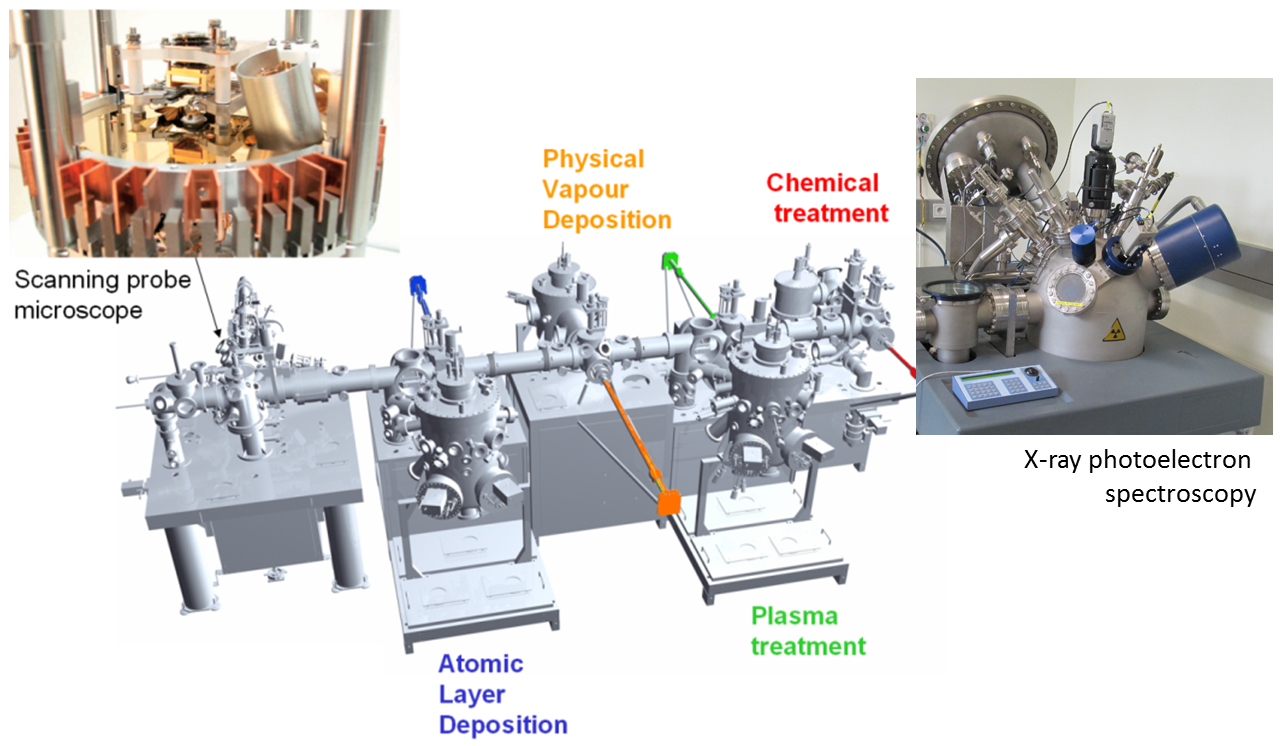Services
X-ray Photoelectron Spectroscopy
XPS is also called ESCA (Electron Spectroscopy for Chemical Analysis). It is a surface (<5 nm) sensitive technique that can analyse the elemental concentration and chemical and electronic states of a vacuum compatible sample.
More information: http://www.xps.ugent.be/ or contact nico.deroo@ugent.be
Restrictions on samples :
Samples are solid or powder and must be vacuum compatible. A sample can range in size from 0.1 mm in diameter and very thin to 7 cm in diameter and 2 cm thick. Powdered and other rough surfaced samples can also be analyzed.
Samples are generally mounted using clips or adhesives onto standard fixtures. It is useful to know in advance if the sample is conducting and if it will be outgassing in vacuum.
Please keep your samples clean (keep them in an sealed container or in Aluminium foil, do not touch them)
Scanning electron microscopy
The department has a FEi Quantafeg SEM, equipped with EDX (EDAX) and EBSD (TSL). This electron microscope allows the user to visualize the samples with a magnification of up to 1.000.000 times. Our microscope allows working at low-vacuum and ESEM mode, allowing non-conducting or biological samples to be examined. With EDX, the chemical composition of your sample can be determined. Also mappings can be carried out. Finally, EBSD is a microstructural-crystallographic technique used to elucidate the crystallographic texture or preferred orientation of any crystalline or polycrystalline sample. Grains with a range down to approx. 50 nm can be measured.
Contact Diederik Depla or Olivier Janssens for more information.
X-ray diffraction
X-ray diffraction (XRD analysis or XRPD analysis) is a unique method in determination of crystallinity of a compound.
The department has different central XRD apparatus. For using these facilities please contact Diederik Depla.
SPINAL
SPINAL is an ultra-high vacuum cluster tool for studying surfaces, thin films and nanostructures. The system consists of a scanning probe microscope (SPM) and a vacuum transfer line (the “SPINAL cord” of the tool), which allows for transferring samples between deposition and characterization chambers under ultra-high vacuum conditions. The SPM enables the characterization of morphological and electronic properties of surfaces at the atomic scale, using either atomic force microscopy or scanning tunnelling microscopy. The temperature of the sample can be varied during the measurement, enabling fundamental research on dynamic surface processes.
The research group CoCooN acquired instruments for atomic layer deposition and x-ray photoelectron spectroscopy, that will be attached to the SPINAL setup. The linear transfer line will be the vacuum connection between characterization techniques and a number of different synthesis/deposition techniques that can potentially be connected to the transfer line in the coming years. This will enable sample synthesis, transfer and characterization all within ideal ultra-high vacuum conditions, ensuring the purity and stability of the surface. This research facility provides an excellent framework for establishing a research line in the field of physics and chemistry of surfaces.
You can get more information from research group CoCooN.
Conceptual drawing of the SPINAL infrastructure, with examples of possible extensions to enable different types of deposition/surface treatment. At present, SPM is available and XPS/ALD are being implemented.
